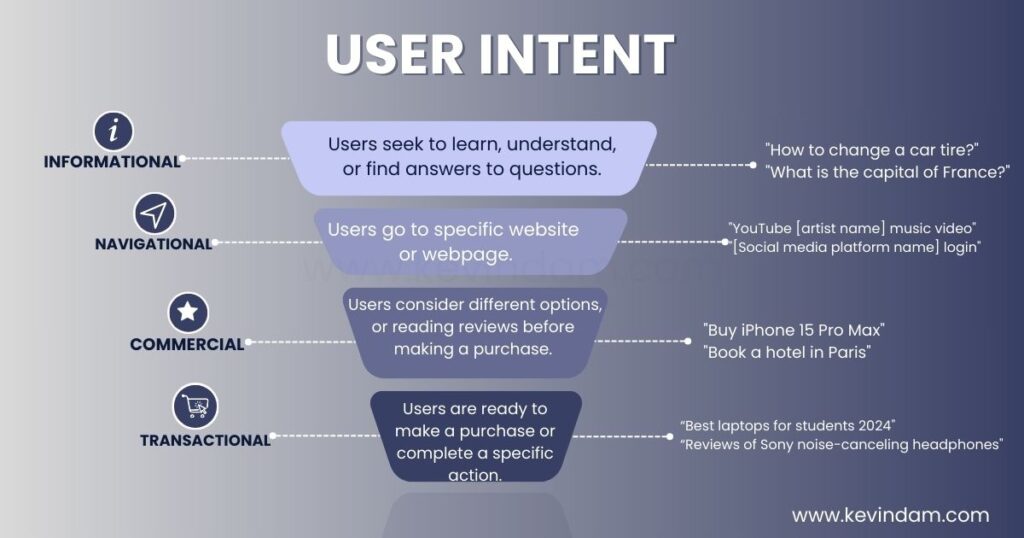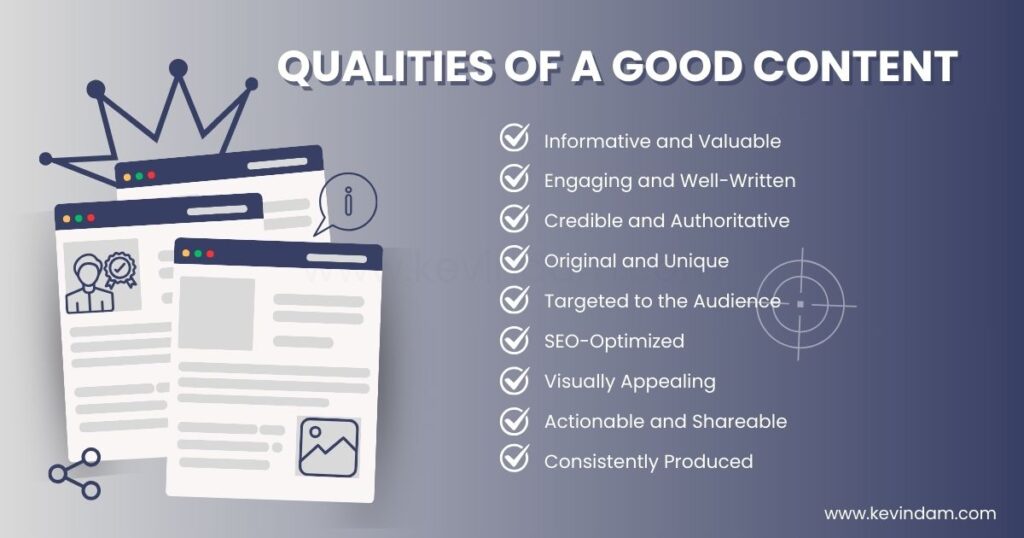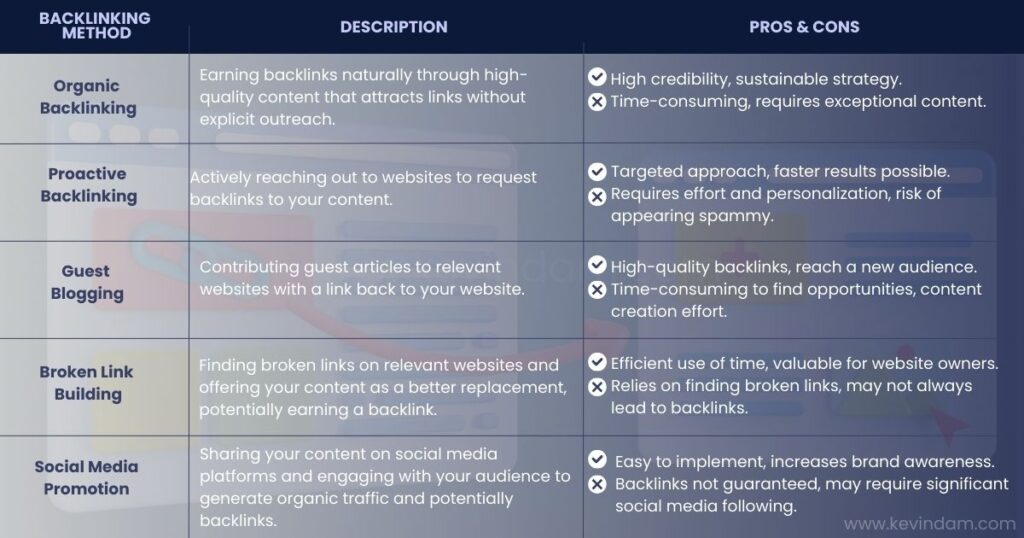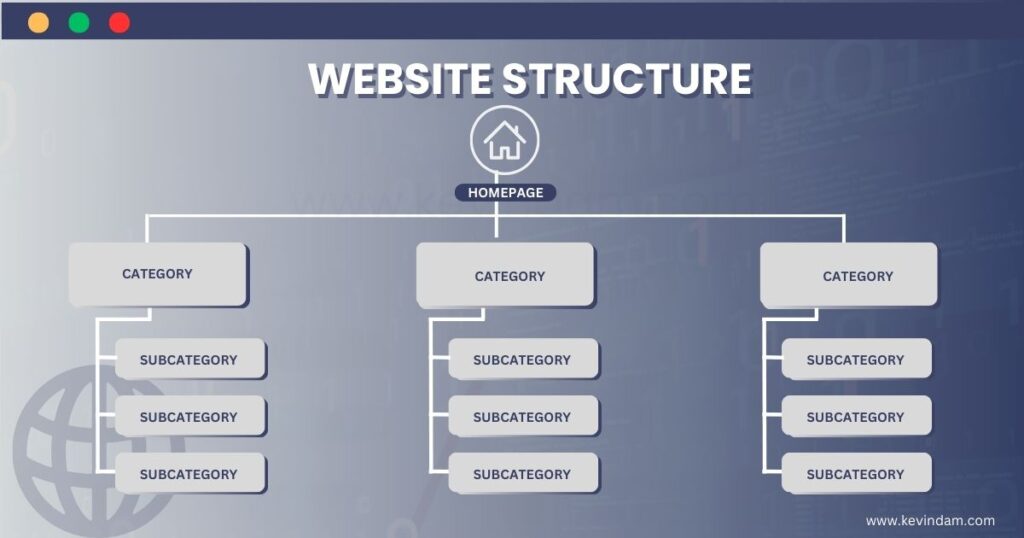
Last Updated August 14, 2024
Top Strategies for Crafting High-Quality SEO Content
If you want your target audience to find your SEO content, this is a must-read.
Imagine putting your heart and soul into creating a website packed with useful information, great design, and an exceptional user experience. But then the frustration kicks in—your site doesn’t rank, and your visitor counter stays stubbornly at zero.
This article will guide you in navigating the landscape of SEO content creation. From topic selection to fine-tuning advanced strategies, it aims to equip you with the tools necessary for elevating your online presence.
Understanding SEO Content
Search Engine Optimisation (SEO) enables creators to increase their online visibility and audience engagement. Essentially, it involves crafting high-quality, valuable content that cleverly incorporates strategic keywords and other optimisation techniques to appeal to both search engines and human readers.
This collaboration is crucial for any digital content strategy as it enables your target audience to easily find your content through organic searches. The better your content optimises, the higher the potential it has to climb the search engine rankings, attracting more viewers to your pages.
Beginners in SEO will learn about the essence of a user-focused approach to content creation and how to sustain the interest of your audience, leading to a more dynamic and effective online presence.
What is SEO Content
SEO content is designed with the dual purpose of appealing to search engines and engaging readers. Its success lies in drawing organic traffic to your website by positioning your pages as worthy of a search engine’s recommendation to its users.
Understanding SEabout’keyword content is not just about ‘ stuffing’. Instead, it revolves around the creation of relevant, valuable content customised to align with both search intent and audience interests.
Types of SEO Content
There are various types of SEO content, each serving a specific purpose within your overall digital marketing strategy. Consider the following table that categorises different content formats, along with their intended purpose and potential benefits:
| Type of Content | Purpose | Benefits |
| Blog Posts | Engage readers, establish authority, answer audience questions, provide insights | Drives organic traffic improves engagement |
| Product Pages | Convert visitors into customers | Increases sales, enhances user experience |
| Videos | Provide visual information, entertain | Increases time on site, appeals to visual learners |
| Infographics | Simplify complex data, increase shareability | Improves comprehension, encourages backlinks |
| Long-form Articles | Dive deep into topics, demonstrate expertise | Boosts credibility, captures dedicated readership |
Examples of successful SEO content can be found on leading blogs that consistently rank high on search engine results pages or businesses’ websites with a strong online presence. These platforms excel due to authoritative product descriptions and reviews. Studying these successes can offer insights into developing impactful SEO content strategies for your digital footprint.
Fundamental Steps to Create Impactful SEO Content
Creating SEO content is a systematic process that involves several critical steps to ensure content not only reaches its intended audience but also resonates and drives engagement. Discover the key elements to craft compelling SEO content:
Step #1: Selecting a Topic
When you’re choosing a topic, relevance is a priority. Identify subjects that are not only interesting but also significant to your target audience. Review forums, social media, and customer feedback to gauge what questions and problems your audience is looking to solve. Aligning your content with their interests will establish a connection with readers and motivate them to engage with your material. A well-chosen topic can act as a seed from which valuable SEO content grows.
Step #2: Keyword Research Fundamentals
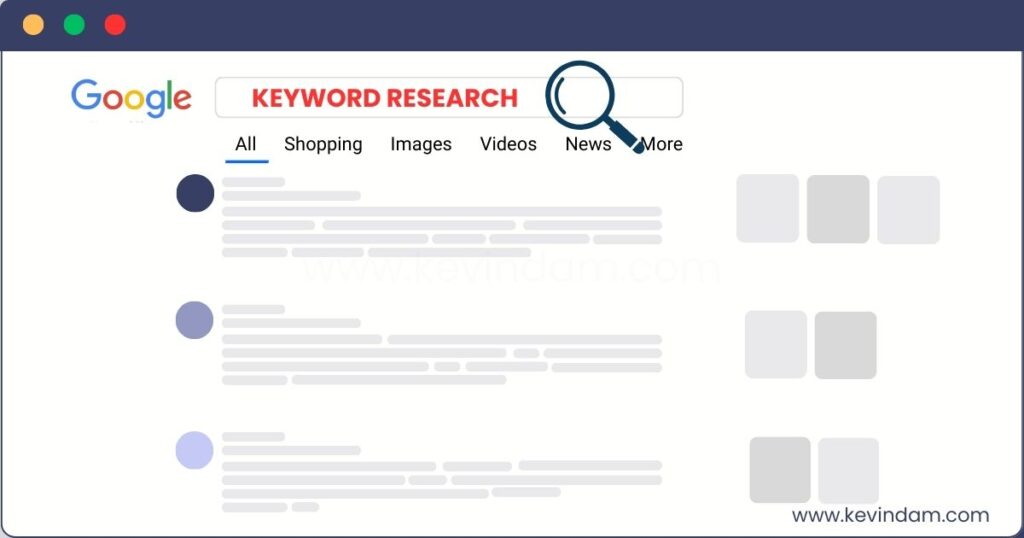
The next step in your SEO journey is mastering keyword research. Start using keyword research tools like Google Keyword Planner or paid tools to identify semantically related keyword extensions and uncover competitive keywords related to your topic.
Prioritise long-tail keywords—they may have lower search volumes, but they pack a punch in specificity and relevance, leading to higher conversion rates. Creating a mix of high-volume and long-tail keywords helps balance reach and targeted engagement.
Step #3: Analysing Search Intent
Comprehending search intent – why someone is conducting a specific search—is pivotal. Search queries typically fall into four categories:
Informational
Users with informational intent are looking to learn something new, understand a concept, or find an answer to a question. They might use keywords like “how to,” “best practices for,” or “what is the difference between.” Content that caters to informational intent should be informative, educational, and address the user’s specific query in a comprehensive way. Think blog posts, articles, explainer videos, or glossaries.
Navigational
Users with navigational intent know exactly where they want to go online and are likely searching for a specific website or webpage. They might type in the exact brand name or use generic terms like “YouTube” or “Wikipedia.” SEO for navigational intent is less about ranking for specific keywords and more about ensuring your website is easy to find and has a clear, user-friendly navigation system.
Transactional
Users with transactional intent are ready to make a purchase or complete a specific action. They might use keywords like “buy now,” “price comparison,” or “discount code.” Content optimised for transactional intent should be conversion-focused. This could include product pages, shopping carts, clear calls to action, and secure checkout processes.
Commercial
Users with commercial intent are in the research phase before a purchase. They’re interested in learning more about a product or service, considering different options, or reading reviews. They might use keywords like “reviews of,” “best features of,” or “alternatives to.” Content for commercial intent should be informative but persuasive, highlighting the benefits of your product or service compared to competitors. Consider blog posts with product comparisons, buying guides, or customer testimonials.
The content you create should directly address the intent behind the keywords. For instance, informational intent calls for educational blog posts or how-to guides, while transactional intent aligns with product reviews or comparison pages.
Step #4: Crafting Comprehensive and Unique Content
Content should be both comprehensive and unique. Start by researching existing content and then go a step further by offering something new: this might be deeper insights, updated information, or a different perspective. Use the skyscraper technique by adding more value than competitive content: create more in-depth explanations, add custom images or infographics, and provide real-life examples to create standout material that readers and search engines will appreciate.
Step #5: Optimisation for Users and Search Engines
Finally, optimising your content is a dual-focused task. Ensure it’s easily digestible for readers with short paragraphs, bullet points, and subheadings, and ensure it’s ready for search engines with meta tags, alt text for images, and internal linking.
Include your focus keyword as close to the front of the meta description as possible, along with other relevant terms. Remember to avoid overusing keywords—also known as keyword stuffing—as it can harm readability. Instead, focus on incorporating keywords seamlessly and where naturally appropriate.
By following these steps, you’ll be well-equipped to create SEO content that attracts and holds attention, encouraging readers to return and interact with your brand consistently.
Advanced SEO Content Strategies
Advanced SEO content strategies involve fine-tuning your approach to creating content that stands out in a competitive digital landscape. You can achieve higher search engine rankings and better user engagement by delving deeper into data analytics, refining targeting techniques, and layering your content with rich semantic connectivity. Implementing an advanced strategy encompasses a variety of sophisticated tactics aimed at solidifying the presence of your content in the eyes of your audience and search engines.
Define Your Goals and Audience
Before diving into content creation, it’s crucial to establish clear objectives and develop a keen understanding of your target audience. Set specific, measurable, achievable, relevant, and timely (SMART) goals to guide your content strategy and to measure its success. Knowing your audience is equally important. Demographic data, behavioural insights, and psychographic information help tailor your content to the needs, challenges, and desires of your target market. Doing so ensures that every piece of content you create has a purpose and will likely resonate with the people most important to your brand.
Content Planning
An effective content plan is a roadmap for producing and distributing SEO content. This involves brainstorming topics that align with your brand’s objectives and audience interests and then scheduling them strategically over time. Use content calendars to organise deadlines, assign responsibilities, and track progress. Tools like Trello, Asana, or a simple spreadsheet can streamline the process. By planning your content in advance, you also ensure a consistent publishing schedule, which is key to maintaining and growing organic traffic.
Keywords and Contextual Relevance
Keywords are the bedrock of SEO, but the modern approach extends beyond mere keyword insertion to creating a thematic tapestry within your content. Introduce hypernyms (broader terms), employ hyponyms (specific terms), and layer your writing with contextual relevance. This helps search engines understand your content’s niche and, therefore, present it as a solution to the relevant queries. Use semantic search principles to enhance keyword strategies, and don’t avoid utilising latent semantic indexing (LSI) to add depth and connection to your topic.
Link Building Strategies
A robust link profile is an essential element of SEO. Efficient link-building strategies include guest posting on reputable sites, creating shareable infographics, and crafting compelling content that naturally encourages external sites to link to yours. Internal links are equally significant; use them to guide users to relevant content on your own site, thereby increasing engagement and dwell time. Both internal and external link-building efforts enhance the authority and reach of your website, signalling to search engines the value and trustworthiness of your content.
Enhancing Site Structure for SEO
A well-organised site structure not only improves user experience but also aids SEO efforts. A logical hierarchy of information with a clear navigation path makes it easy for both users and search engine crawlers to find content. Utilise categories and subcategories effectively, and leverage breadcrumb navigation to guide users through your site. An organised site structure can also help spread page authority throughout your website, positively impacting the SEO performance of individual pages.
Practical Tips for Site Optimisation
When optimising your website’s content for search engines, cornerstone content is paramount. This refers to essential articles or pages that you wish to rank highest in SERPs. Here are practical tips to ensure your site is a SEO powerhouse:
- Craft Cornerstone Content: Identify the foundation of your site’s subject matter and create comprehensive, authoritative pages on these topics. These should be kept up-to-date with fresh and relevant information.
- Avoid Duplicate Content: Search engines penalise sites with identical or ‘copied’ content across multiple pages. Ensure each piece of content is unique and adds value to avoid penalties and confusion among visitors.
- Manage Content Cannibalisation: Avoid having multiple pages that compete for the same keywords. Review your content regularly and merge or differentiate pages that overlap significantly in topic and keyword targeting.
- Include a Clear Internal Links Structure: Guide your visitors to your cornerstone content through well-placed internal links. This not only enhances user experience but also boosts the visibility of your key pages.
- Maintain Content Quality: Regularly update your content to maintain its relevance and accuracy. High-quality content fosters user trust and engagement, which in turn can lead to higher rankings.
Remember, a well-optimised site leads to better visibility, traffic, and user engagement.
The Role of Social Media in SEO
While social media signals do not directly impact search engine rankings, they amplify your content’s reach and foster engagement, which can lead to an indirect SEO boost. Use social media platforms to share your content, interact with your community, and expand your brand’s online footprint. Engaging content on social media can generate shares and traffic, which, in turn, can lead to increased brand recognition and backlinks—both valuable for SEO. Strategic use of hashtags, timing of posts, and connecting with influencers can further enhance your social media impact on SEO.
Incorporating these advanced SEO content strategies into your overall digital marketing plan will help elevate the quality and visibility of your content, ensuring a greater return on investment and sustained success in your online efforts.
Measuring Success in SEO
Understanding how to track and evaluate the performance of SEO content is essential for any digital marketing strategy. Use key performance indicators (KPIs) to gauge your success and make data-driven decisions for improvement.
Key Performance Indicators:
- Organic Traffic: Monitor the number of visitors that arrive through search engines. A rise indicates improved SEO.
- Search Rankings: Check the position of your content for target keywords. Higher rankings often lead to more visibility.
- Click-Through Rate (CTR): This measures the percentage of users who click on your content from the search results.
- Bounce Rate: A low rate suggests relevant content that engages readers, while a high rate may indicate the opposite.
- Conversion Rate: Examine how often visitors complete desired actions, like signing up or purchasing.
To continuously improve your SEO, follow these steps:
- Review your KPIs regularly using tools like Google Analytics.
- Identify content that performs well and analyse what’s working.
- Update underperforming content with relevant keywords and valuable information.
- Iterate your strategy, focusing on creating high-quality content that aligns with search intent.
Remember, short paragraphs make for clear, digestible reading. Consider incorporating tables listing KPIs and a checklist for improvement processes to enhance understanding.
Conclusion
Embracing SEO is essential for any digital content strategy aiming to enhance online visibility and user engagement. This article has outlined the foundational pillars: the significance of targeting the right audience with high-quality content and the perils of practices like keyword stuffing. Crafting compelling meta descriptions, as well as utilising internal links, improves organic traffic.
Blog posts should always prioritise user experience, with every content piece centred around your target keyword to align with search volume and intent. Strong search engine rankings can secure featured snippets, enhancing your digital marketing achievements. Utilise tools such as Google Analytics to refine your SEO content strategy.
Here’s a brief checklist for your content marketing efforts:
- Maintain content quality; avoid duplicate content.
- Use SEO tools effectively.
- Analyse and apply the data from Google Analytics.
Remember that SEO and Content Marketing are dynamic landscapes requiring continuous learning and adaptation. Apply the strategies discussed, and don’t shy away from delving into more complex SEO techniques to stay ahead in the game. Your content’s future depends on how well you understand and react to these evolving digital marketing trends.
